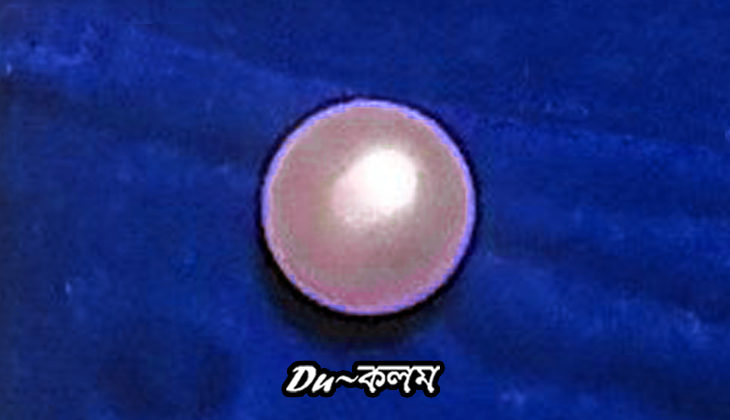 Srimanta Mitra
Srimanta Mitra
For ardent lovers of Satyajit Ray’s detective Feluda, The Mystery of the Pink Pearl is not a very memorable one. It does not have the depth of The Golden Temple, or the thrills of The Bandits of Bombay, or the edge-of-the-seat spookiness as The Secret of the Cemetery. But for me, it was one of the most memorable ones when I read it as a child, and I would only realise the reason behind it much later.
If you haven’t read it, you haven’t missed much. It’s a very short read, certainly one of the shortest of the entire Feluda series. And the real “mystery” that gets solved isn’t particularly interesting because there’s not much that happens, truthfully. It relies on the ol’ switcheroo – Feluda and Topshe set up the thief with a fake pearl, and the thief’s complicity in this fact exposes him for who he is. It’s textbook, really – simple but effective.
So why is it my favourite?
Well, it is the only Feluda story that pays close attention to the narrative. Not what it is but rather how it’s told.
Let me explain. All stories are told from Topshe’s perspective – but Topshe never considers himself more than a passive figure in the narration. He sees the goings-on and reports them in his stories like a dutiful student. Being a direct correlate of Conan Doyle’s Watson, this seems reasonable, right?
But we know that writers are more than passive receptacles that simply gather information and regurgitate it. That’s what computers do, and even computers can’t process (complex) information without internal coordinates…
The story of the mystery of the pink pearl exposes this chink in the narrative armour.
The Fate of Friendly Advice
Towards the end of the story, after the mystery has been solved, we learn that Feluda advises Topshe to withhold a key bit of information from the readers. “Don’t reveal that you switched the pearl when you tell the story,” he says (or something to the effect). “Your readers will get bored. There will be nothing to look forward to if they already know this.”
There was nothing remotely resembling this in any other Feluda story that I remembered reading.
You may think that this isn’t a big deal, and you would be right. Everybody wants an exciting story, right? Yes, of course; this much is certainly considered to be obvious.
But for me, it changed everything. Because this exchange implied that there were two different worlds for a writer: there is the story as it is read and then there is another story over and above the main story – and that is the story of the reader’s reactions to the story.
There is a lot of “theory” with which to analyse this. One of the denser ways to express this is through the term “extradiegetic space” (“diegesis” is the world of the story, the diegetic space is the space of the story – extradiegetic spaces lie beyond the world of the story). By exposing the extradiegetic space of the writer, Satyajit Ray revealed the magician’s sleight of hand.
Yet another term to understand this comes to us through Brecht’s concept of breaking the fourth wall – an imaginary wall that exists between the actors and the audience. By directly addressing the audience you force them to reckon the fact that the stage is a “real” space, which doesn’t simply exist in “fantasy”. The viewer (or in this case, reader) is forced to consider the implications of the story beyond the stage (or in this case, the page). This changes the implications of any form of consumption from passive to active; viewing or reading stops being an indulgent activity and, instead, becomes a call to action.
But enough of that nonsense. Theory is boring. What does all this mean? It simply means that there was another mystery to be solved!
So What’s the Real Mystery?
For me, the real mystery of the mystery of the pink pearl is this: why did Satyajit Ray only employ this beyond-the-narrative technique only in an offhand way in one of the tiniest Feluda stories? It made me think about all the other things Feluda could’ve possibly said to Topshe about how to structure his narratives – across all their adventures! I wondered about how Topshe thinks about writing – what does he want his readers to feel? Which details does he include and which ones does he exclude – and why? Further, what was Satyajit Ray, as the actual writer of this mystery, thinking? And what was his process – what did he include/exclude and why?
In the final analysis, the mystery of the mystery of the pink pearl is not one but many mysteries. But without a Feluda advising a Topshe how to finish writing it, it seems unlikely that we will discover the sleight-of-hand that makes this narrative intriguing.
 Srimanta Mitra
Srimanta Mitra
Srimanta Mitra is a psychologist, multi-instrumentalist, digital marketer and writer. He has a Master’s degree in Psychology from Ambedkar University, Delhi, and a Bachelor’s degree in English literature from Sri Venkateswara College, Delhi University.

